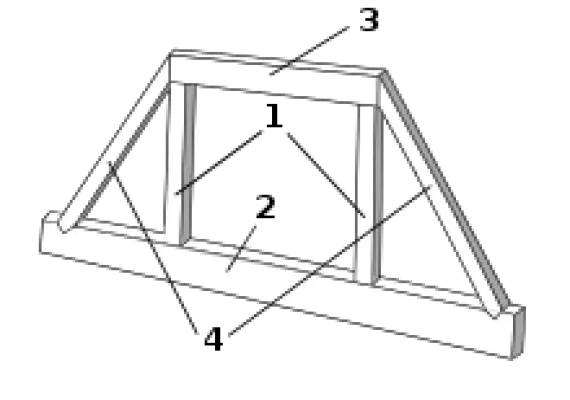How to Identify Load-Bearing Walls in the Apartment?
How to Identify Load-Bearing Walls in the Apartment?
To identify a load-bearing wall in an apartment, it is important to go down to the basement or attic to observe which way the joists run.
If they are running parallel to the wall then it can be assumed that the wall is not load-bearing, but if they are perpendicular then it’s likely that the wall is carrying weight and supporting other parts of the building.
It is also possible to check for additional structural support elements on the interior side of a load-bearing wall such as steel columns and beams, or large wood headers. Radiofrequency scanning may also be used in some cases.
Ultimately, consulting with a professional engineer or architect before making any alterations or demolitions should provide an answer if you cannot determine this yourself through visual inspection or other assessment methods.
What Is The Easiest Way To Identify A Load-Bearing Wall?
The easiest way to identify a load-bearing wall is to check the basement or crawlspace for another wall or support structure directly below a first-floor wall.
Load-bearing walls are usually thicker than 6 inches, and often have beams, columns, or other walls directly underneath them that follow the same path.
It’s also important to inspect the foundation around these walls and make sure they are firmly supported. If any of these signs appear, then it’s likely that this wall is load-bearing and should not be removed without professional guidance.
Where Are Most Load-Bearing Walls Located?
Load-bearing walls are most commonly found along the exterior of a building, providing support for the structure as well as acting as a barrier from the elements.
These walls may contain windows or doors and must be reinforced by beams and posts to span across these openings.
Although an entire stretch of the exterior wall may not always provide support, it is very rare in a house that such a feature would exist without bearing any load.
Can An Architect Determine If A Wall Is Load-Bearing?
Yes. An architect or structural engineer can determine if a wall is load-bearing by examining the structural design of the building, looking at any documents related to it, and taking into consideration the placement of nearby columns, beams, support walls, and joists.
Contractors may also be able to provide insight into which walls are load-bearing as they often have experience in dismantling walls that need to be moved or altered.
Ultimately, ensuring which parts of the structure take weight will ensure a safe and secure foundation for any renovations or remodeling projects.
What Is An Example Of A Load-Bearing Wall?
A load-bearing wall is a wall that supports the weight of the structure above it and transfers this load to the foundation below. Common examples include solid masonry walls, cavity walls, and faced walls.
These walls are integral to the structural integrity of a building as they prevent excessive levels of strain and pressure from being transferred to the foundation.
How Thick Are Load-Bearing Walls?
Load-bearing walls are much thicker than partition walls, typically 30cm or more in thickness.
This extra thickness provides the wall with the necessary strength to support ceilings and roof structures, as well as any other vertical loads the wall may need to bear due to its structural role within a building.
On average load-bearing walls tend to consist of several layers (including insulation and various moisture barriers) that ultimately add up to give a wall its desired thickness.
What Are The Characteristics Of A Load-Bearing Wall?
A load bearing wall is one which carries the vertical load. It usually occurs above a beam, and can be used as an interior or exterior wall, as it not only carries the weight of itself but other materials and structures as well.
Load bearing walls should be strong and sturdy, constructed with durable materials like brick or concrete blocks to ensure they can withstand heavy loads and prevent shifting over time.
The walls should also be correctly sealed against moisture to prevent water intrusion and structural damage, making sure the wall won’t start to deteriorate over time.
Additionally, proper insulation needs to be included in all load-bearing walls in order to help regulate temperatures inside of a building while providing energy efficiency.

